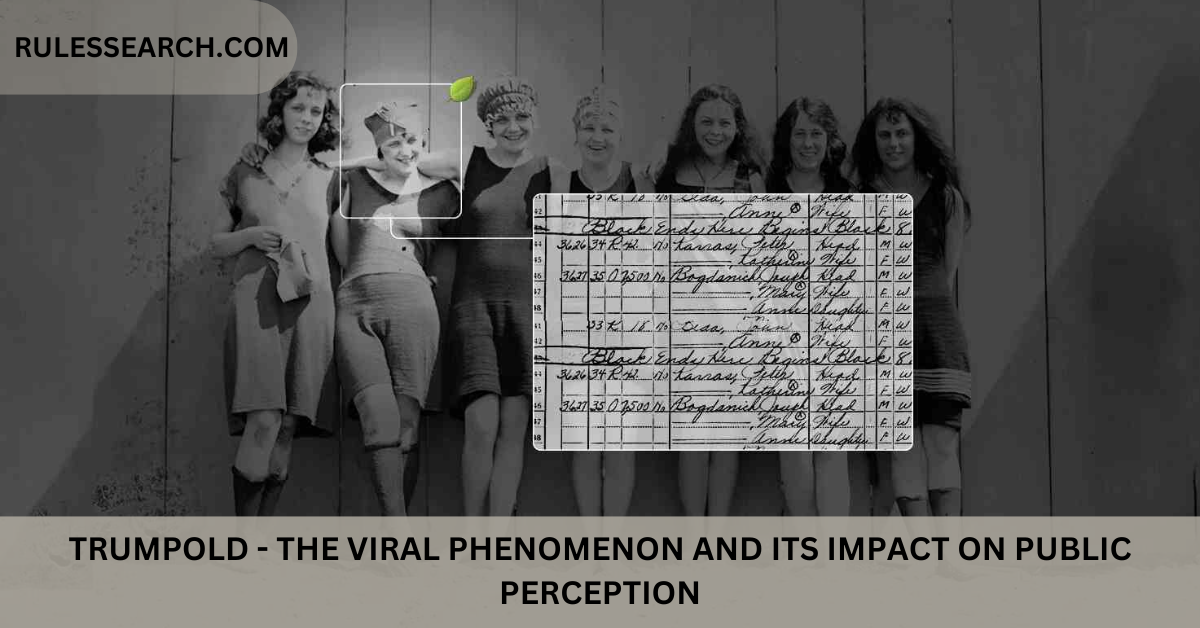Introduction
In the ever-evolving digital landscape, certain events capture the public’s imagination and quickly go viral. The summer of 2016 saw one such incident in the tranquil town of Grande Prairie, Alberta, when an obscure figure named Dennis James Tissington was thrust into the spotlight. The viral video of his intense confrontation became the talk of the internet, drawing attention from various corners of the world, including the United States.
This article delves into the phenomenon surrounding the keyword “trumpold,” exploring its origins, the role of social media, and the broader implications of such viral moments. By providing detailed insights and analyses, we aim to uncover the layers behind the keyword’s rise to prominence and its impact on public perception.
The Incident in Grande Prairie
The Emergence of Dennis James Tissington
Grande Prairie, a quiet town in Alberta, was suddenly thrust into the limelight when a video of Dennis James Tissington went viral. The video captured a heated confrontation between Tissington and another individual, resulting in a moment that resonated across social media platforms. Tissington, previously unknown to the wider public, became an overnight sensation, but not for reasons one might expect.
The Viral Video and Its Aftermath
The video, which quickly spread across the internet, showcased Tissington in a moment of intense anger. While such incidents are not uncommon, the particular circumstances of this video struck a chord with many viewers, leading to widespread discussion and debate. The video became a viral sensation, with millions of views and countless shares, ultimately turning Tissington into a figure of public interest.
Public Perception and Media Coverage
As the video continued to circulate, media outlets picked up the story, further amplifying Tissington’s newfound notoriety. The coverage varied, with some outlets portraying him in a negative light, while others took a more neutral stance. This disparity in coverage highlights the complex nature of viral content and how it can shape public perception in different ways.
The Phenomenon of Virality
Understanding Viral Content
In today’s digital age, content can go viral within minutes, reaching audiences far beyond its original scope. The incident involving Dennis James Tissington is a prime example of how quickly and unpredictably a piece of content can capture the public’s attention. But what exactly makes something go viral?
Virality often hinges on emotional resonance, whether it be shock, outrage, humor, or empathy. The Tissington video, with its raw display of emotion, struck a chord with viewers, triggering a wave of reactions that propelled it into the viral stratosphere.
The Role of Social Media
Social media platforms like Facebook, Twitter, and YouTube play a pivotal role in the spread of viral content. The algorithms that govern these platforms are designed to prioritize content that generates high levels of engagement, meaning that videos like the Tissington incident are more likely to be seen by a broader audience.
In the case of “trumpold,” the keyword likely gained traction due to the widespread sharing of the video, coupled with discussions and debates that ensued on social media. As more people engaged with the content, the keyword became more prominent, eventually leading to its association with the incident.
Analyzing the “Trumpold” Keyword
Possible Origins and Connections
The keyword “trumpold” appears to be a blend of “Trump” and “old,” possibly alluding to former U.S. President Donald Trump and the concept of age or something from the past. However, its exact connection to the Tissington incident is not immediately clear. It is possible that the keyword gained popularity as a result of discussions surrounding the video, with users drawing parallels between Tissington’s behavior and the public persona of Donald Trump.
The Power of Keywords in the Digital Age
Keywords play a crucial role in how content is discovered and shared online. In the case of “trumpold,” the keyword may have been used to draw attention to the incident, leveraging the popularity of Trump-related discussions to boost visibility. This strategy is common in the digital space, where keywords can be manipulated to increase engagement and drive traffic.
The Rise of “Trumpold” in Online Discussions
As the video of Tissington continued to circulate, the keyword “trumpold” became a focal point in online discussions. Whether used to comment on the incident, draw comparisons to Trump, or simply to generate clicks, the keyword quickly gained traction, becoming a trending topic in certain online communities.
Public Reactions and Interpretations
Diverse Reactions from the Public
Public reaction to the Tissington video was mixed, with some viewers expressing outrage, while others found humor in the situation. This diversity in reactions underscores the subjective nature of viral content and how it can be interpreted in various ways.
The Impact on Tissington’s Reputation
For Dennis James Tissington, the viral video had a profound impact on his reputation. While some saw him as a symbol of unchecked anger, others viewed him as a victim of the internet’s tendency to blow things out of proportion. The incident serves as a reminder of how quickly one’s public image can be shaped by a single moment captured on camera.
The Broader Implications of Virality
The Tissington incident also raises questions about the broader implications of virality. In an age where anyone can become a viral sensation, the line between public and private life becomes increasingly blurred. The incident highlights the potential for ordinary individuals to be thrust into the public eye, often with little control over how they are portrayed.
The Long-Term Impact on Grande Prairie
The Town’s Response to the Incident
Grande Prairie, a town not accustomed to such attention, found itself in the midst of a media frenzy. The local community had to grapple with the sudden influx of attention, with some residents feeling proud of the town’s newfound notoriety, while others were concerned about the potential negative impact.
The Economic and Social Effects
The viral nature of the incident had both positive and negative effects on Grande Prairie. On the one hand, the town received increased visibility, which could potentially boost tourism and local businesses. On the other hand, the incident also brought unwanted attention, leading to concerns about how the town was being portrayed in the media.
The Legacy of the “Trumpold” Incident
Years after the incident, the keyword “trumpold” continues to be associated with Grande Prairie and Dennis James Tissington. While the initial wave of attention has subsided, the legacy of the incident remains, serving as a cautionary tale about the power of virality and the unpredictable nature of internet fame.
Conclusion
The “trumpold” while seemingly innocuous at first glance, carries with it a complex web of meanings and associations. From its origins in a viral video involving Dennis James Tissington to its rise as a trending topic, the keyword offers a glimpse into the power of the internet to shape public perception and elevate ordinary individuals to global notoriety.
As we continue to navigate the digital landscape, the “trumpold” incident serves as a reminder of the far-reaching impact that viral content can have on individuals, communities, and even entire towns. In a world where anyone can become the subject of a viral sensation, understanding the dynamics of virality is more important than ever.
FAQs
1. What is the meaning of the keyword “trumpold”?
The keyword “trumpold” appears to be a combination of “Trump” and “old,” potentially alluding to former U.S. President Donald Trump and the concept of something old or from the past. Its exact connection to the Dennis James Tissington incident is unclear but may have gained popularity due to online discussions.
2. How did the Dennis James Tissington video go viral?
The video went viral due to its emotional resonance and the rapid sharing on social media platforms. The intense confrontation captured in the video struck a chord with viewers, leading to widespread discussion and debate.
3. What role did social media play in the virality of the Tissington video?
Social media platforms like Facebook, Twitter, and YouTube were instrumental in spreading the video. These platforms’ algorithms prioritize content with high engagement, allowing the video to reach a broad audience quickly.
4. Why did the town of Grande Prairie become famous due to the Tissington incident?
Grande Prairie became famous because the video of the incident took place there, drawing attention from across the internet and leading to increased media coverage of the town.
5. How has the incident affected Dennis James Tissington’s reputation?
The incident had a significant impact on Tissington’s reputation, with some people viewing him negatively due to the viral video, while others felt he was unfairly portrayed.
6. What are the broader implications of virality in today’s digital age?
Virality can blur the lines between public and private life, making it possible for ordinary individuals to become internet sensations overnight. This phenomenon raises questions about privacy, consent, and the long-term impact on those who go viral.
7. How did the keyword “trumpold” gain traction online?
The keyword “trumpold” likely gained traction due to its association with the viral video and the subsequent discussions and debates that took place online.
8. What lessons can be learned from the “trumpold” incident?
The “trumpold” incident highlights the power of the internet to shape public perception and the unpredictable nature of virality. It also serves as a reminder of the potential consequences of being thrust into the public eye.
9. What impact did the incident have on the town of Grande Prairie?
The incident brought both positive and negative attention to Grande Prairie, with increased visibility potentially boosting tourism but also raising concerns about how the town was portrayed.
10. Will the “trumpold” keyword continue to be relevant in the future?
While the initial wave of attention may have subsided, the “trumpold” keyword remains associated with the incident and could continue to be relevant in discussions about virality and internet fame.



